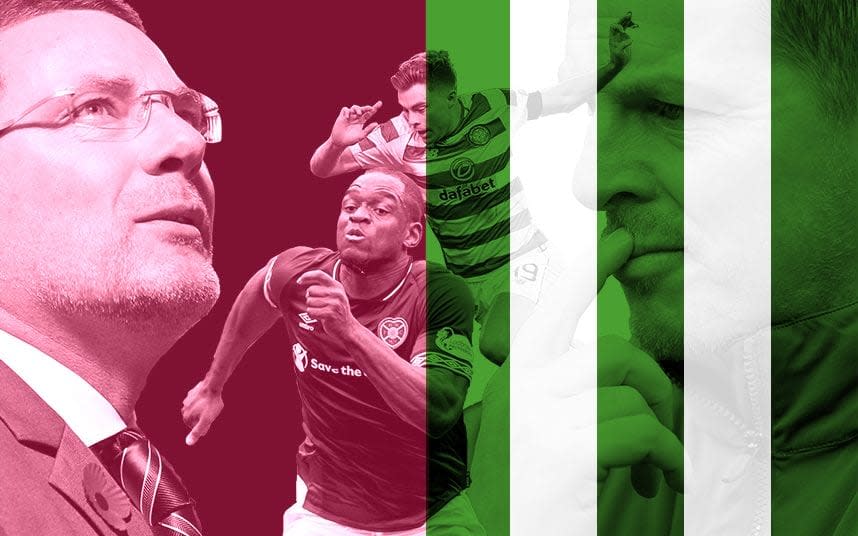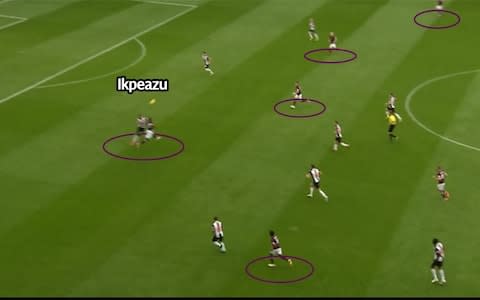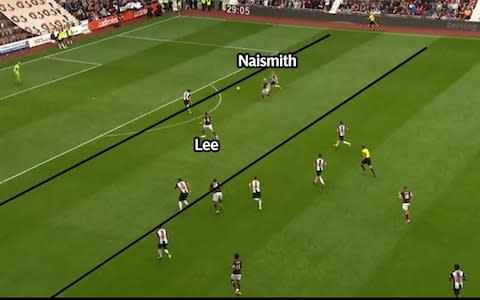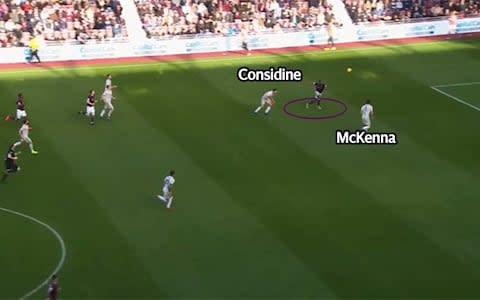How Hearts can prevent Celtic winning historic treble treble in Scottish Cup final

Hearts are 8/1 to win the Scottish Cup final and have lost 2-1, 2-1, 5-0 and 3-0 against Celtic so far this season. Suffice to say, it's going to be a difficult game for Craig Levein and his players.
All that stands between Celtic and an incredible treble treble is a one-off match and anything can happen in a cup final. Optimistic Jambos can point towards the Hearts 1-0 Celtic result from August at the season's beginning as a beacon of possibility too but in reality, the side from Edinburgh need to play better than they have for many months and hope Celtic have a bad day.
So, how can Hearts pull off a Scottish Cup upset? What will Celtic do to ensure this doesn't happen?
Levein-ball 2: Electric Boogaloo
At the start of the season Hearts were excellent, attacking with freedom and flying up the table, even prompting talk of a title push. Injuries took their toll - specifically to Steven Naismith - and so Levein had to change how his side set up. The result, as many football pragmatists have done before, was reverting to what he knows best: Levein-ball.
A 5-4-1 or 5-3-2 has been the go-to shape with Hearts defending in a really low block, hitting long passes towards Uche Ikpeazu and turning games into frustrating range wars. Sometimes it works - Hearts aren't going to win a passing game against Celtic anyway.
Back in the early days of the season, Levein used a 4-4-2 which attacked as a 4-3-3. Naismith played on one wing, Steven Maclean partnered Ikpeazu upfront, another midfielder (often Arnaud Djoum) tucked in to form a midfield three but joined in attacks, and Dimitri Mitchell’s starting position was more left-wing than left wing-back - everything was focused on getting the ball through the lines quickly at pace on the counter. It was fun to watch.
But was it? In a 4-1 win over a dreadful St Mirren in September 2018 this is how they scored the second goal. Jimmy Dunne has miles of space but doesn't mess about, launching the ball towards the opposite box.

Ikpeazu is there and - as he has all season (when fit) - dominates in the air and heads the ball on.

St Mirren's dreadful defending is exposed instantly and somehow Naismith is able to jump and head an uncontested bouncing ball across the box to Olly Lee. As a side note, the distance between St Mirren's deepest two defenders and rest of the 'chasing' pack from a straight long ball is embarrassing.

Lee lets the ball bounce across his body and slams it top left to put Hearts 2-1 up.

Here's another example of a different goal, this time in the 2-1 win over Aberdeen in March 2019. A free-kick wide on the left is taken quickly and punted long.

Ikpeazu is the target, Andrew Considine misreads the bounce...

And the striker easily ghosts past Scott McKenna for a one v one with Joe Lewis.

It's just one comparison from many Hearts goals, but the principles are similar. Defend deep, hit the ball long (Hearts punted it up the pitch from kick-off in both matches) and win the second balls. The big difference is that earlier in the season players were encouraged to run forward and join in these attacks, now they act as though actively denied this freedom. Safety first.
Hearts had beaten Celtic, Kilmarnock and Aberdeen by October but a 5-0 hammering from Celtic appears to mark a turning point in the season. Defeats to Kilmarnock, St Mirren and Rangers followed and challenged with a rapidly expanding injury list, Levein decided the best thing to do was protect the defence by making everyone join it.
Rather than defending by keeping the ball up the other end of the pitch, Hearts kept midfielders closer to their centre-backs than forwards when out of possession. An extra centre-back was brought in, meaning wing-backs were required, which changed the shape and style.
How Hearts might approach the Celtic game
Oddly, the team shape in games against Rangers, Celtic and Aberdeen has been a back four in either a 4-4-2 or 4-2-3-1 and this is what we'll most likely see on Saturday.
Two banks of four defend behind the ball, MacLean stands up top ready to contest long balls and float around alongside. Hearts' average position maps often make it look like they've played two wingers because in a way they do - just not at the same time. The ball-side wide midfielder joins the attack in a lop-sided three as the opposite midfielder tucks in.

Those behind the forward three don't venture too far forward. Levein is focused on keeping things tight, doing so by blocking the path to his goal with numbers - even when on the attack - removing the element of risk at the expense of making his team frustrating and tedious to watch at times.
If Arnaud Djoum does start he could be wide on the right in defensive phases but form a central midfield three during the short periods of time that Hearts keep the ball, with Jake Mulraney attacking on the opposite wing.
The style of play isn't pretty but long passes to Ikpeazu allow the defence out the trenches and ensure Hearts can move up the pitch. There's nothing surprising about it, the team who 'wants it more' tends to win the battles and after jumping for a header, much is left to the dice roll of contesting second balls and chance. Beating a team as overpowered as Celtic requires an abundance of luck for a club like Hearts.
Ikpeazu, Peter Haring and Djoum are all apparently available to play in the final but with all three having only recently recovered from injury, picking a starting line-up is difficult. Celtic will have far more of the ball at Hampden and the physical demands on players forced to run from side to side, always tracking, breathlessly chasing will leave them exhausted if not at 100 per cent fitness and on from the start.
Ikpeazu is a target and threat with his pace but a more sensible gameplan might be keeping the striker on the bench and getting him on the pitch at about 60 minutes, assuming the score is still 0-0. By that point, Celtic's centre-backs may have taken enough of a battering/be tired enough that they don't fancy trying to deal with another muscle-mountain throwing himself about up top.
How Celtic will approach the match
Neil Lennon's side are the clear favourites and highly likely to end the match as treble treble champions. However, complacency can lead to mistakes and Hearts will be hoping to prey on just one.
Since Levein will almost certainly field two strikers up front, Lennon may opt for a back-three to gain numerical advantage and ensure the battering ram approach doesn't work. During his time at Hibs a 3-5-2 was common and Celtic have utilised it too since Lennon's return to Parkhead, making use of Kristoffer Ajer's ability to carry the ball into midfield and act as auxiliary playmaker when Celtic have the ball.
It's something that Virgil van Dijk used to do under Lennon as well. Having made the run into midfield with the ball, the opposition automatically retreats. The Celtic wing-backs can go high and wide, dragging the opposition wingers back, the defence drops towards their own goal, creating distance between the lines for the wide forwards to move into and attack small spaces.

Ajer made 92 progressive runs (gaining territory with the ball at feet) in the Scottish Premiership this season, third behind only Jordan Jones (97) - a winger - and James Tavernier (93) - a full-back who mostly spends his time attacking as a winger. In context, Eden Hazard (158) and Felipe Anderson (143) lead the charts in the English Premier League for this statistic - Bernardo Silva was closest to Ajer's number, with 95. Ajer's number is naturally lower than it could have been, having only played 28 games.
Having this option means Celtic can play a back-three but keep the attacking shape of a team with a back-four. If Hearts pull a striker back to midfield, Mikael Lustig can move out to right-back, Kieran Tierney (if fit) can drop to left-back, Ajer partners Jozo Simunovic at centre-back and James Forrest, Mikey Johnston or whoever starts on the right will be able to push further up the pitch and keep Hearts pinned back ever deeper.
Making use of possession
Celtic had an average of 69.8 per cent possession in the Premiership this season and will end the final with something similar. Callum McGregor and Scott Brown can dictate play but must ensure passing is quick and vertical. It has taken last-gasp winners from Celtic this season to secure narrow 1-0 wins even against the likes of Dundee and a big reason is the opposition forcing Celtic's passes around a defensive block and being able to win the aerial battle with the striker when contesting crosses sent from wide areas. Odsonne Edouard is a great young player, but he is no target man.
By keeping a midfield block ahead of Brown and McGregor and ensuring they can't pass through the middle, Celtic run out of forward options, go wide, are forced back and this repeats until they realise it's 0-0 at 80 minutes and a goal is required. At that point the tempo picks up and one of the star players conjures something out the air to turn the match.
Hearts can't depend on Celtic not turning up. The Scottish Cup final is a massive fixture and Celtic will be determined to prove they deserve the treble treble and won't approach the match with any sort of complacency, as they have perhaps been guilty of in the league at times.
Over a league season Celtic will always finish above the likes of Hearts but the beauty of knock-out competition is anything can happen in 90 minutes and sometimes special things do. As the Hearts 1-0 Celtic result back in August shows, this all-conquering team is not unbeatable - and Levein knows it.

 Yahoo News
Yahoo News 
